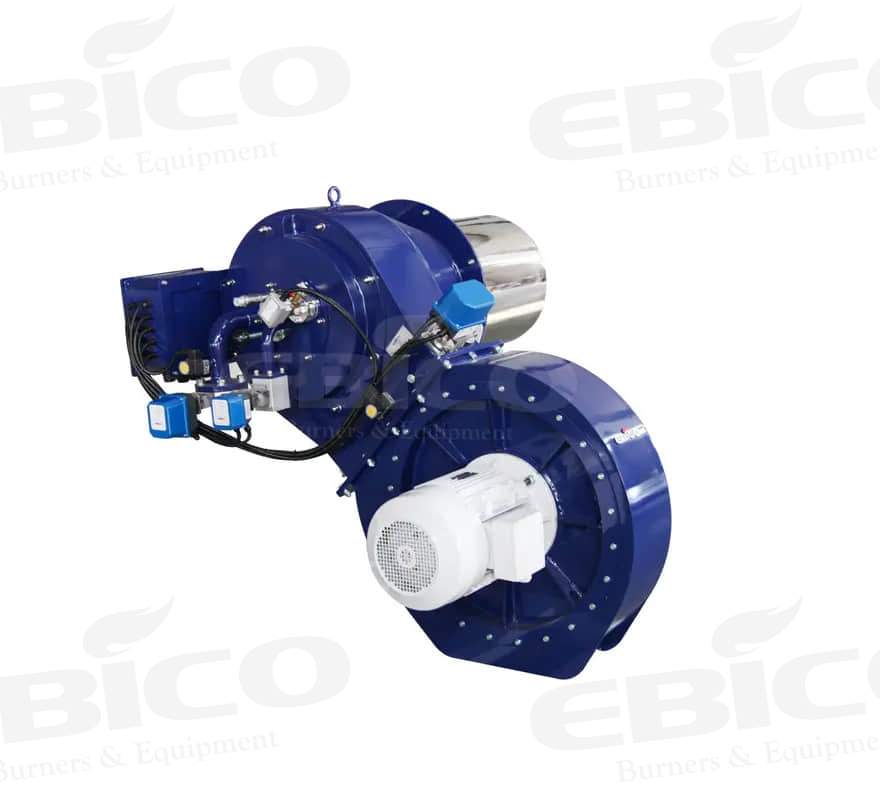How Do The Burner Of Fuel Gas boiler And Fuel Oil Boiler Work?
How Do The Burner Of Fuel Gas boiler And Fuel Oil boiler Work?
Burner is an important equipment for fuel oil and fuel gas boiler. The oil burner is composed of an atomizer (oil nozzle) and an air conditioner, while the fuel gas burner is composed of a gas nozzle and air conditioner. In order to make the fuel in the boiler burn well and use heat effectively, the atomization quality of the oil must be improved and the oil mist or gas can be fully mixed with the air. This is mainly realized by means of the burner.

In order to meet the needs of the combustion process in the furnace and ensure the safe and economic operation of the boiler, the technical requirements for the oil burner are:
1. The combustion efficiency is high. For the fuel oil burner, the fuel oil shall be well atomized within a certain adjustment range. The fine surface of the oil shall be uniform, the atomization angle shall be appropriate, and the oil mist shall be evenly distributed along the circumference to increase the contact area between the oil mist and the air.
2. The air distribution is reasonable to ensure stable and complete fuel combustion. The air necessary for combustion is supplied from the root of the flare, which shall be mixed with the oil mist rapidly and uniformly to ensure complete combustion and less harmful substances (CO, no, etc.) generated in the flue gas. Make the airflow into an appropriate reflux area, and keep the fuel and air in a high-temperature field to ensure rapid ignition and stable combustion.
3. The flame generated by combustion shall be compatible with the structure and shape of the furnace. The flame fullness shall be good. The flame temperature and blackness shall meet the requirements of the boiler. The flame shall not scour the furnace wall, furnace bottom, and extended convection heating surface.
4. The adjustment range is large, and it can meet the needs of adjusting the boiler load. The burner can work stably from the lowest load to the highest load of the boiler, without flashback and fire.
5. Less energy is required for fuel atomization.
6. The resistance of the air regulating device is small.
7. The operation of ignition, ignition, and adjustment is convenient, safe, and reliable, and the operation noise is small.
8. It is simple and compact in structure, light in components, reliable in operation, easy to adjust and repair, and easy to realize automatic control of the combustion process.
The combustion conditions of oil and gas boilers mainly depend on the atomization quality of the burner for oil and the reasonable air distribution for oil, gas, or gas. Poor atomization of the burner or unreasonable air distribution will bring the following hazards:
1. Incomplete combustion, polluting the heating surface at the tail of the boiler, increasing the exhaust gas temperature, and even causing secondary combustion.
2. Incomplete combustion of fuel oil or gas causes great heat loss, wastes energy and fuel, and causes environmental pollution.
3. Fuel atomizer or furnace coking.
4. Flameout, fire cannon, and even furnace and flue explosion.
Fuel oil is a liquid fuel, and its boiling point is lower than its ignition point, so the combustion of oil is always carried out in the gaseous state. After the atomized oil particles are injected into the furnace, they are heated by the high-temperature flue gas in the furnace and gasified. The gasified oil gas meets the oxygen in the surrounding air to form a flame. Part of the heat generated by combustion is transmitted to the oil particles so that the oil particles are continuously gasified and burned until they are burnt out.
The combustion ways of intensified oil include:
1. Improve atomization quality and reduce oil particle size. This can increase the heat absorption surface and gasification surface of the oil particles, thereby accelerating the gasification speed of the oil. The gasification speed of oil particles is related to their particle size. The smaller the particle size, the faster the gasification.
2. Reasonable air distribution. Supply proper air to different areas in time to avoid carbon black caused by high temperature and hypoxia, and ensure complete combustion of oil in the minimum excess air.
The fuel oil burner is composed of an oil atomizer and air conditioner according to the above requirements. The fuel oil is atomized into oil particles through the atomizer, injected into the furnace at a certain atomization angle, and mixed with the airflow with a certain shape and speed distribution sent through the air conditioner. The cooperation of the oil atomizer and the air conditioner shall enable most of the air required for combustion to be supplied from the flame root in time, and make the air distribution at all places of the flare adapt to the flow density distribution of the oil mist. At the same time, a certain amount of air shall be supplied to the tail of the flare to ensure the burnout of carbon black and coke particles.
